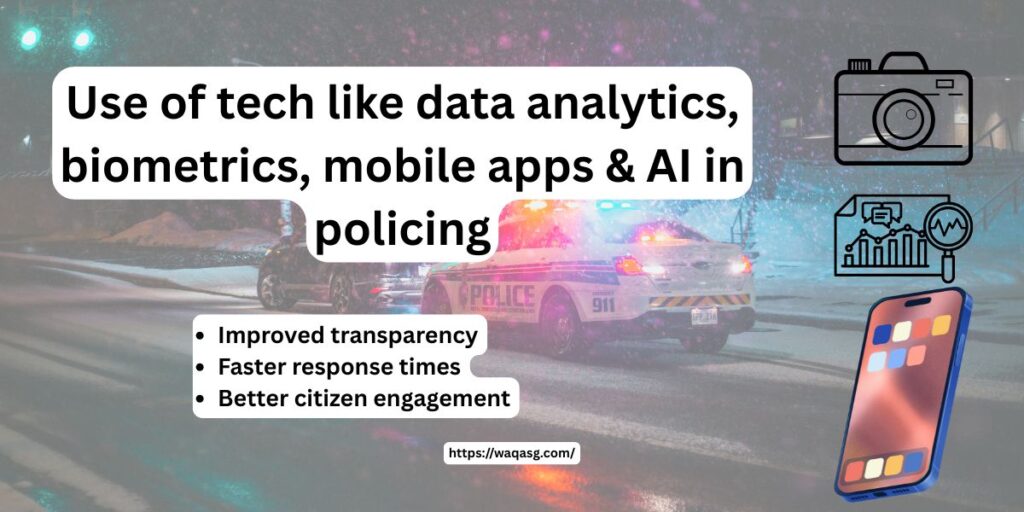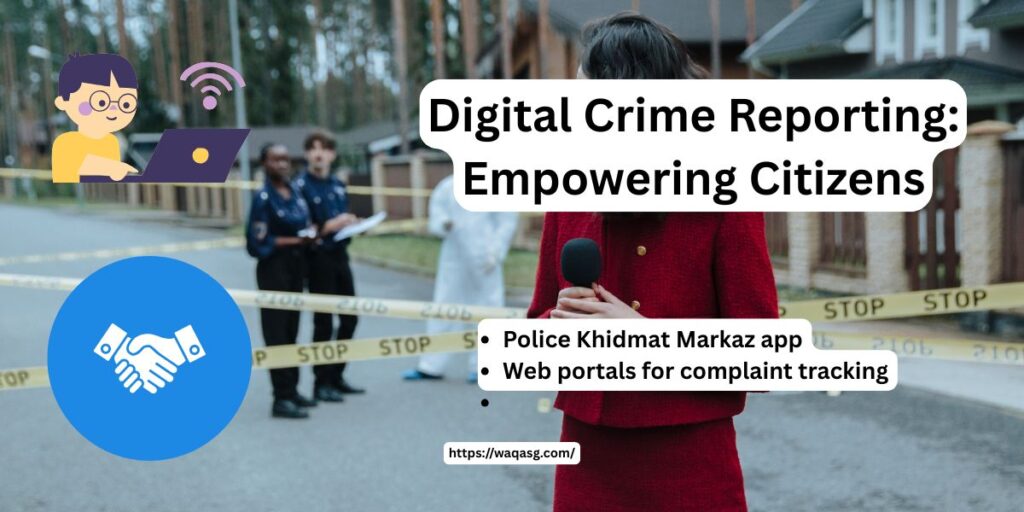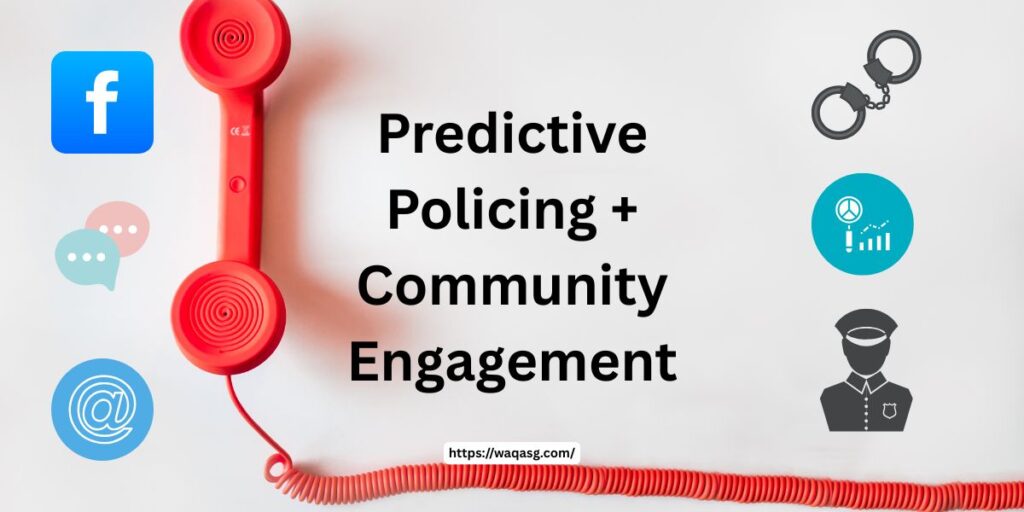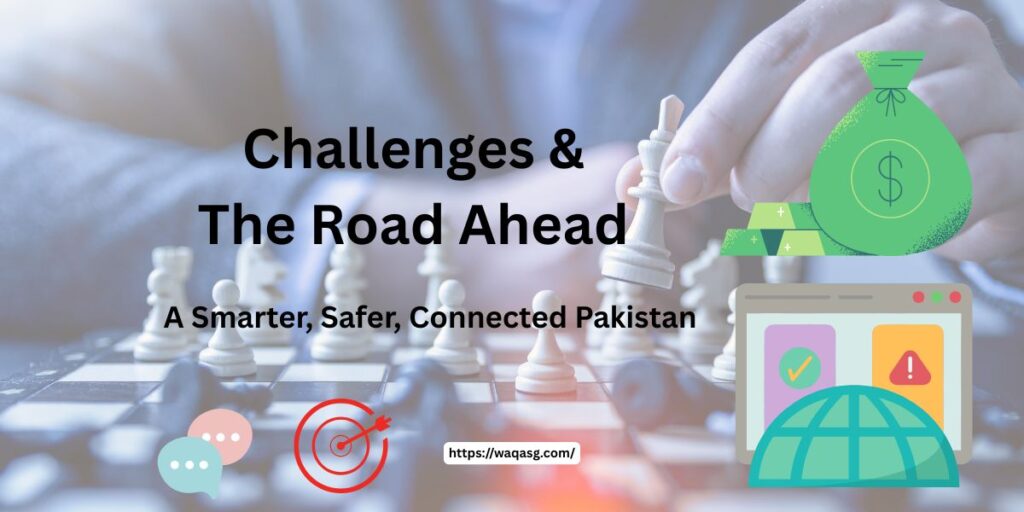
Introduction
Technology is reshaping every sector of society today, and law enforcement is no exception. In Pakistan, the Police Service is rapidly evolving, embracing digital innovations to enhance public safety, efficiency, and transparency. From smart surveillance systems to digital databases, modern technology is transforming policing in a positive direction. In this blog post, we’ll explore how digital technology is significantly improving the Police Service of Pakistan and what these advancements mean for the citizens of the country.
Understanding Digital Policing in Pakistan
Before diving deeper, it’s essential to clarify what exactly “digital policing” means. Simply put, digital policing involves the use of advanced technological tools—such as data analytics, mobile apps, biometric verification, and surveillance systems—to improve efficiency, transparency, and effectiveness in police operations.

In recent years, Pakistan’s law enforcement agencies have started embracing these digital solutions, realizing their potential to improve security, reduce crime rates, and build stronger community relations.
Smart Surveillance: Enhancing Public Safety
One of the most visible transformations in the Police Service of Pakistan is the introduction of smart surveillance systems. Major cities like Lahore, Karachi, Islamabad, and Peshawar have implemented sophisticated CCTV networks, powered by artificial intelligence (AI) and machine learning technologies. These smart cameras not only record footage but also analyze behavioral patterns, recognize faces, and detect anomalies in real-time.

Such systems have considerably improved police response times to incidents. The Punjab Safe Cities Authority (PSCA), for example, has successfully leveraged these technologies, dramatically reducing street crimes in Lahore by pinpointing crime hotspots and deploying resources proactively.
Digital Crime Reporting: Simplifying Citizen-Police Interactions
Previously, reporting crimes or registering complaints was a tedious and frustrating process. Digital policing is changing that. Now, mobile apps and web-based platforms are simplifying the interaction between citizens and the police, improving accessibility and trust.

Apps such as the Police Khidmat Markaz by Punjab Police allow citizens to register complaints digitally, track their reports, and receive timely updates—all from the comfort of their homes. This transparency is fostering greater trust between the community and law enforcement agencies, vital for effective policing.
E-Policing and Efficient Data Management
Gone are the days of dusty paper files and cluttered records rooms. The Police Service of Pakistan is rapidly adopting e-policing solutions, digitizing records, and databases. This allows law enforcement agencies immediate access to crucial information during investigations, greatly improving their efficiency.

The Criminal Record Management System (CRMS) is one of the landmark projects adopted by Punjab Police. CRMS stores criminal records digitally, allowing police officers across different jurisdictions quick access to crucial criminal data. Such efficient data management not only speeds up investigations but also enhances coordination among different policing units nationwide.
Biometric Verification: Making Identity Checks Reliable
One of the groundbreaking technological advancements in Pakistan’s policing system is biometric verification. Integrated with NADRA’s databases, biometric scanners are now commonplace at police checkpoints and investigative units, enabling rapid identification of suspects or verification of citizens’ identities.
This not only reduces errors but also significantly lowers the likelihood of wrongful arrests or detentions. Moreover, biometric identification helps authorities quickly verify the identity of citizens during routine patrols, adding an extra layer of security and reassurance for the general public.
The Power of Predictive Policing
Predictive policing, driven by artificial intelligence and data analytics, is emerging as a powerful tool for crime prevention in Pakistan. By analyzing historical data, law enforcement agencies can predict crime patterns and proactively deploy resources to high-risk areas.
This strategy has been effectively used in Islamabad, where the Islamabad Safe City Project utilizes data-driven insights to preemptively address crime-prone zones. Predictive policing allows the Police Service of Pakistan to shift from reactive to proactive crime prevention, enhancing public safety dramatically.
Social Media and Community Engagement
In the digital age, social media has emerged as a potent tool for police forces globally. The Police Service of Pakistan is also harnessing the power of social media to communicate directly with citizens, providing updates, seeking feedback, and addressing public concerns rapidly.

Platforms like Twitter, Facebook, and Instagram are extensively used by various police departments across Pakistan, allowing for real-time communication. This engagement has significantly boosted public trust, transparency, and community cooperation, which are crucial in maintaining law and order effectively.
Challenges and Solutions in Adopting Digital Policing
While the journey towards complete digital transformation is optimistic, it’s not without its challenges. These include budget constraints, resistance to change within traditional institutions, data security concerns, and the digital literacy of police personnel.

However, the government and police authorities in Pakistan are proactively addressing these challenges. Investment in training and capacity-building, strengthening cybersecurity protocols, and improving technological infrastructure are critical steps that are actively being pursued. Partnerships with private tech firms and international organizations further aid in overcoming these barriers and ensuring a smoother transition to digital policing.
Impact of Digital Policing: A Safer and Smarter Pakistan
The transformation of the Police Service of Pakistan through digital technologies is already making a visible difference. With enhanced transparency, reduced crime rates, improved citizen satisfaction, and increased police efficiency, the impacts are far-reaching and beneficial.
Citizens now perceive police as more approachable, responsive, and effective. This digital transformation is not only about technological enhancement but also about creating a police force that works for the citizens, fostering trust, and providing security.
Future Prospects: Continuous Innovation
The future of digital policing in Pakistan is bright and continually evolving. Innovations like drone surveillance, mobile command centers, and integration with broader smart-city initiatives are on the horizon. These advancements promise an even more sophisticated policing environment in the coming years.
Additionally, collaboration with technology startups and universities can spur innovation, ensuring Pakistan’s police service remains adaptive and equipped with the latest technological solutions.
Conclusion
Digital policing in Pakistan represents a transformative shift in the law enforcement landscape. Through the strategic use of advanced technologies—such as smart surveillance, predictive analytics, digital reporting systems, and biometric verification—Pakistan’s Police Service is evolving rapidly to become more efficient, transparent, and citizen-centric.
This optimistic journey toward digitization not only promises safer cities and communities but also establishes Pakistan’s police force as a modern, proactive entity ready to address the challenges of the 21st century. By embracing these digital innovations, Pakistan is taking firm steps toward a smarter, safer, and more connected future.




No comment yet, add your voice below!